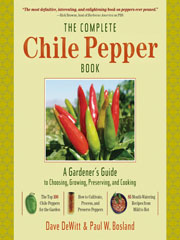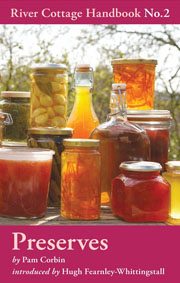It’s mid November, the nights have drawn in and winter it seems is well and truly with us. As we wonder if those last few pods will ripen there are a few jobs that we can be getting on with in order to help prepare for a great year of chilli growing next year…
Harvets the last chillies
This year has been a strange one here in the UK; heatwave in April, a cold wet and windy August and an unusually mild autumn. The net result of this is that unusually for mid November I am still getting habaneros ripening! I moved most of my plants back under glass a few weeks ago and amazingly they are still ripening.
As you can see in the picture below some of my habaneros are a bit stunted this year – i think this is due to the inconsistent weather. The plant below was over wintered from last year when it produced normal sized fruit so this must be the reason.
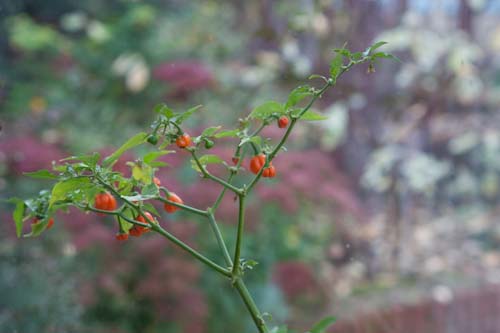
By now I have already harvested most of my chillies and as ever have used various different methods to preserve my crop so i can continue to enjoy them over the coming winter. With the remainder i’ll eat most of them fresh and will freeze the remainder.
Clean the greenhouse
I don’t actually have a greenhouse but have instead taken over a conservatory that has now become known as ‘the chilli house‘. By the end of each growing season it is filthy. As well as chillies there is always a large amount of tomatoes, cucumbers grown in there along with a constant supply of seedlings and cuttings throughout the year.
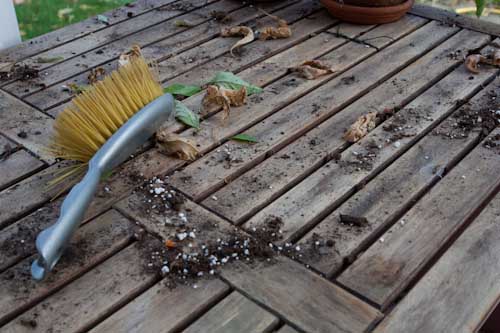
Having a good clear out and thorough clean of the floor and glass is not just good for the soul but it also helps prevent the spread of diseases and bugs. There are no secrets, just a bit of hard graft required. I simply take everything out, give it a good sweep out and wash the windows, walls and floor.
Insulate the greenhouse
As mentioned above I’m lucky enough to have a double glazed conservatory to grow my plants in. If your greenhouse is single glazed and you’re planning to over winter some chilli plants then you may want to consider insulating the greenhouse with bubble wrap.
Doing so will keep the temperature a few degrees higher than normal which can help you avoid losing any plants during a particularly cold frost. If you live in a slightly warmer climate then you might be able to just get away with a small greenhouse heater like i do.
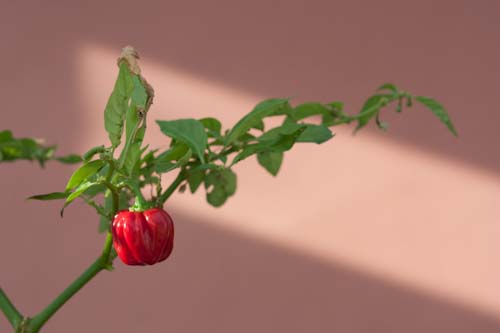
Sort the seeds
Every year, like most chilli growers I get carried away and buy way too many seeds each spring. The winter is the perfect time to have a good clearing and throw any old seed away and work out what seeds you can use next year.
Don’t forget to ensure you store your seeds correctly. Ideally keep them in an air tight container in a cool dark room. An old biscuit tin in the garden shed is pretty much what you are after!
Choose plants to overwinter
We’ve written numerous articles on overwintering on this site over the last few years. In order to give yourself the best chance of success choose the strongest healthiest plants that produced the most crop this year. Look for plants with no disease that have produced a good quantity of tasty peppers.
Once you’ve selected the plants to over winter you can add the remaining plants that have stopped fruiting to the compost heap. In order to speed up the composting process try to break up the root balls as much as possible before adding to the heap. For more composting tips take a look at our comprehensive guide to composting.
Take stock
Don’t forget to take stock of your growing season. I find it useful to make a few notes on what varieties I grew, what the weather was like and worked grew well and what didn’t. You’ll find that in the future you may want to refer back to see what worked well in previous years and what ended in disaster!
Plan for next year
Now is of course the best time to plan next years crop and start sourcing seeds. Remember that slow growing varieties such as naga, bhut jokokia and habaneros need a long growing season. To get the best from these plants you may want to consider planting some seeds arums Christmas time to get a big head start on the growing season.
Of course if you’re planting seeds so early don’t forget you may have to provide some artificial light to the seedlings to get them through the dark winter. Whether it is a grow light setup, a mini greenhouse or indoor windowsills now is the time to start planning (and maybe negotiating with the wife!) where you’ll be keeping all of next years crop until the spring arrives fully.

